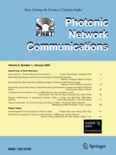
PHOTONIC NETWORK COMMUNICATIONS
Scope & Guideline
Connecting Ideas through Photonics and Networking.
Introduction
Aims and Scopes
- Optical Network Design and Optimization:
Research in this area focuses on developing efficient architectures for optical networks, including elastic optical networks (EONs) and wavelength division multiplexing (WDM) systems. The goal is to enhance performance metrics such as throughput, latency, and resource allocation. - Advanced Modulation and Coding Techniques:
This scope involves the exploration of new modulation formats and coding strategies to improve data transmission rates and reliability in optical communication systems, including OFDM and multi-carrier schemes. - Quantum Communication and Security:
The journal includes research on quantum key distribution (QKD) and other quantum communication protocols, emphasizing secure communication methods that leverage quantum mechanics. - Visible Light Communication (VLC):
Investigations into VLC technologies, including modulation techniques, network architectures, and practical applications, are a significant focus, particularly as they relate to smart cities and IoT. - Integration of Photonic Technologies:
Research on integrating photonic components such as micro-resonators, photonic crystals, and all-optical devices into network systems to enhance performance and reduce energy consumption. - Network Control and Management:
Studies on software-defined networking (SDN) and intelligent control mechanisms for managing optical networks, including dynamic resource allocation and traffic engineering.
Trending and Emerging
- Quality of Service (QoS) in Optical Networks:
Recent papers show a growing emphasis on Quality of Service (QoS) mechanisms in optical networks, reflecting the industry's need for reliable and efficient communication systems that can meet diverse user demands. - Integration of AI and Machine Learning Techniques:
There is an increasing trend towards incorporating artificial intelligence (AI) and machine learning techniques into optical network management and optimization, showcasing the potential for intelligent systems to enhance performance. - Hybrid Communication Systems:
The rise in research on hybrid systems that combine different communication modalities, such as free-space optical (FSO) and radio frequency (RF) communication, indicates a trend towards more versatile and resilient network solutions. - Underwater Optical Communication:
Emerging interest in underwater optical communication systems, particularly in harsh environments, suggests a growing recognition of the importance of this area for applications in marine monitoring and exploration. - Sustainable and Energy-Efficient Networking Solutions:
Recent publications reflect a focus on sustainable practices in optical networking, including energy-efficient designs and algorithms that minimize power consumption while maintaining performance.
Declining or Waning
- Traditional Fiber Optic Transmission Methods:
Research that focuses on conventional fiber optic transmission techniques, such as simple wavelength division multiplexing without elastic or flexible approaches, has become less prominent as the field moves towards more adaptive and efficient methods. - Basic Optical Components without Advanced Integration:
There is a noticeable decline in studies centered on basic optical components that do not integrate advanced technologies or novel materials, as the focus shifts towards more complex systems that offer higher performance and functionality. - Legacy Communication Protocols:
Research on older communication protocols that are not optimized for modern demands, such as those that do not leverage SDN or advanced modulation techniques, is appearing less frequently. - Single-Domain Optical Networking:
Studies strictly focused on single-domain optical networking without considering multi-domain or cross-layer strategies are becoming less common, as current research emphasizes the need for interoperability and comprehensive network solutions.
Similar Journals
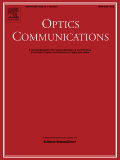
OPTICS COMMUNICATIONS
Exploring the Frontiers of Optical CommunicationOptics Communications, published by Elsevier, is a prestigious international journal that focuses on the dynamically evolving fields of optics and photonics. With its ISSN 0030-4018 and E-ISSN 1873-0310, this journal has made significant contributions to the fields of Atomic and Molecular Physics, Electrical and Electronic Engineering, Electronic, Optical and Magnetic Materials, and Physical and Theoretical Chemistry, consistently ranking in the Q2 quartile across these categories for 2023. The journal, based in the Netherlands, is recognized for its rigorous peer-review process and aims to publish high-quality research articles that advance knowledge and applications in optical communication technologies. Although it operates under a subscription model, the insightful research published here plays an essential role in informing the work of researchers, professionals, and students alike. With a history dating back to 1969 and spanning well into 2025, Optics Communications remains a crucial resource for cutting-edge developments in optics, catering to a global audience dedicated to innovation in this pivotal science.

OPTICA APPLICATA
Pioneering Insights in Atomic and Molecular ResearchOPTICA APPLICATA, published by Wroclaw University of Science and Technology, is a crucial platform for advancing knowledge in the fields of Atomic and Molecular Physics and Optics. With an ISSN of 0078-5466 and an E-ISSN of 1899-7015, this journal serves as a vital resource for researchers, professionals, and students seeking to explore the latest developments and applications in optical science and engineering. Although currently categorized in the fourth quartile in both Atomic and Molecular Physics and Electronic, Optical and Magnetic Materials, its commitment to publishing high-quality research articles, reviews, and technical notes remains unwavering. The journal covers diverse topics from practical applications to theoretical insights and fosters a collaborative environment for global contributors. While it does not offer an open access option, the journal is accessible through university libraries and institutional subscriptions. With an eye towards bridging academic research with real-world applications, OPTICA APPLICATA is well-positioned to influence advancements in photonics and materials science through ongoing issues from 1988 to 2024.

INTERNATIONAL JOURNAL OF SATELLITE COMMUNICATIONS AND NETWORKING
Exploring New Dimensions in Satellite TechnologyInternational Journal of Satellite Communications and Networking is a premier academic journal published by Wiley, dedicated to advancing knowledge in the fields of satellite communications and networking. With an ISSN of 1542-0973 and E-ISSN 1542-0981, this journal has been a significant contributor to the discourse surrounding electronic and media technologies since its inception in 2003. Recognized for its rigorous peer-review process, it has achieved notable rankings, placing in the Q2 and Q3 quartiles across various categories, highlighting its impact and relevance in the competitive domains of Engineering and Media Technology. Researchers, professionals, and students can benefit from access to cutting-edge research and innovations in satellite communications, as it ranks #18/63 in Engineering Media Technology and #323/797 in Electrical and Electronic Engineering. The journal's commitment to fostering a deeper understanding of networking technology makes it an essential resource for anyone looking to stay at the forefront of this rapidly evolving industry.
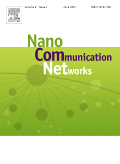
Nano Communication Networks
Bridging the Future of Nano-scale CommunicationNano Communication Networks, published by ELSEVIER, is a pioneering journal in the interdisciplinary realm of nano-scale communication technologies, bridging the fields of applied mathematics, computer networks, and electrical engineering. With an ISSN of 1878-7789 and an E-ISSN of 1878-7797, the journal has established itself as a respected outlet for innovative research since its inception in 2010 and continues to be an invaluable resource through 2024. Recognized for its quality, it holds a Q2 quartile ranking across its primary categories in Applied Mathematics, Computer Networks and Communications, and Electrical and Electronic Engineering, showcasing its competitive ranking in sought-after areas of study. With impressive Scopus ranks such as #66 in Applied Mathematics (89th percentile) and #117 in Computer Networks and Communications (70th percentile), the journal serves as a significant platform for researchers, professionals, and students seeking to explore the advancements in nanotechnology and communication networks. By publishing high-quality research and reviews, the journal aims to foster collaboration and innovation in the field, making it an essential read for those dedicated to the development of cutting-edge technologies.

EURASIP Journal on Wireless Communications and Networking
Pioneering Insights in Networking ExcellenceThe EURASIP Journal on Wireless Communications and Networking, published by Springer, stands as a pivotal platform dedicated to advancing the field of wireless communications and networking. With an ISSN of 1687-1472 and E-ISSN of 1687-1499, this Open Access journal has been disseminating high-quality research since 2004, ensuring broad accessibility for scholars and professionals worldwide. Maintaining an esteemed position in the academic community, it is classified in the Q2 quartile for 2023 across critical categories including Computer Networks and Communications, Computer Science Applications, and Signal Processing. The journal's performance is reflected in its Scopus rankings, which place it in the 73rd percentile for Computer Networks and Communications and the 72nd percentile for both Computer Science Applications and Signal Processing. With a focus on innovative research and practical applications, the EURASIP Journal is an essential resource for anyone seeking to contribute to or stay informed in the dynamic landscape of wireless communication technology.
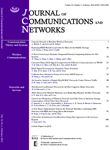
JOURNAL OF COMMUNICATIONS AND NETWORKS
Pioneering Insights in Computer Networks and CommunicationsJOURNAL OF COMMUNICATIONS AND NETWORKS, published by the Korean Institute of Communications Sciences (KICS), is a leading academic journal that has been at the forefront of the fields of Computer Networks and Communications as well as Information Systems since its inception in 1999. With a strong commitment to advancing research in these critical areas, this journal has achieved a prestigious Q1 ranking in both domains as of 2023, reflecting its significant impact and innovative contributions to the field. The journal features original research, review articles, and technical notes that address the latest advancements in communication technologies, network architecture, and data management strategies. As a vital resource for researchers, practitioners, and students, it not only disseminates valuable findings but also fosters collaboration and knowledge exchange among diverse disciplines within the communications landscape. With a consistent annual volume, the journal continues to shape the future of communications science and offers authors an esteemed platform to showcase their work.
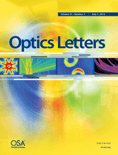
OPTICS LETTERS
Pioneering Innovations in Optical ScienceOPTICS LETTERS is a premier academic journal published by the Optica Publishing Group, dedicated to advancing the field of optics and photonics. Since its inception in 1977, it has maintained a strong reputation for publishing high-impact research, holding a distinguished Q1 category ranking in Atomic and Molecular Physics, as well as Optics, making it a vital resource for researchers and professionals alike. With an impressive Scopus rank of #55 out of 224 in its field, OPTICS LETTERS continues to shape the discourse and innovation in optical science. Authors benefit from its extensive international reach, while readers gain access to cutting-edge studies that address both theoretical and applied aspects of optics. Although the journal currently does not offer open access options, its rigorous peer-review standards ensure that every publication meets the highest academic criteria, making it an essential journal for anyone looking to stay at the forefront of optical research.

IEEE Communications Surveys and Tutorials
Unveiling Innovations in Communications for Future GenerationsIEEE Communications Surveys and Tutorials is a premier journal published by the IEEE-INST ELECTRICAL ELECTRONICS ENGINEERS INC, renowned for its insightful contributions to the field of communications engineering. Since its inception in 2005, this journal has become an authoritative source of comprehensive surveys and instructional materials addressing current trends and advancements in communication technologies. With an impressive Q1 ranking in Electrical and Electronic Engineering, it ranks first among 797 journals in its category, placing it firmly in the 99th percentile according to Scopus metrics. Researchers, professionals, and students alike benefit from its well-researched articles, making it an essential resource for those seeking to deepen their understanding or stay updated on cutting-edge innovations. Although it does not currently operate as an open-access outlet, the journal's commitment to excellence ensures that each publication is a valuable asset for the academic community.
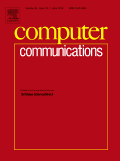
COMPUTER COMMUNICATIONS
Shaping Tomorrow's Communication TechnologiesCOMPUTER COMMUNICATIONS is a premier journal published by Elsevier, covering cutting-edge research in the field of computer networks and communications. With an impressive 2023 Scopus ranking placing it in the 95th percentile and classified as Q1 in its category, this journal embodies the forefront of technological advancement and scholarly excellence. Since its inception in 1978 and poised to continue until 2024, COMPUTER COMMUNICATIONS serves as an essential platform for disseminating high-impact research that advances our understanding of computer networking protocols, architectures, and applications. Although it is not an open-access publication, the journal provides various access options to ensure that its findings are widely circulated among researchers, professionals, and students. Through rigorous peer review and a commitment to fostering innovation, COMPUTER COMMUNICATIONS plays a vital role in shaping the future of communication technologies.

JOURNAL OF MODERN OPTICS
Pioneering Research in Modern OpticsJOURNAL OF MODERN OPTICS, published by Taylor & Francis Ltd, stands as a prominent bi-monthly journal contributing to the fields of Atomic and Molecular Physics and Optics. With an ISSN of 0950-0340 and an E-ISSN of 1362-3044, this journal aims to disseminate high-quality research that pushes the boundaries of optical science and its applications. Since its inception in 1981, and particularly throughout its publications from 1987 to 2024, the journal has consistently published influential studies that are essential for both academic researchers and industry professionals. Ranked in the Q3 quartile for the 2023 category of Atomic and Molecular Physics and Optics, it has a Scopus ranking of #133 out of 224, indicating its steady presence and relevance in the scientific community. Although it does not offer Open Access options, readers can access its rich repository of literature that delves into innovative optical methods, technological advancements, and theoretical frameworks. The JOURNAL OF MODERN OPTICS is an indispensable resource for those seeking to advance their knowledge and research in modern optical science.